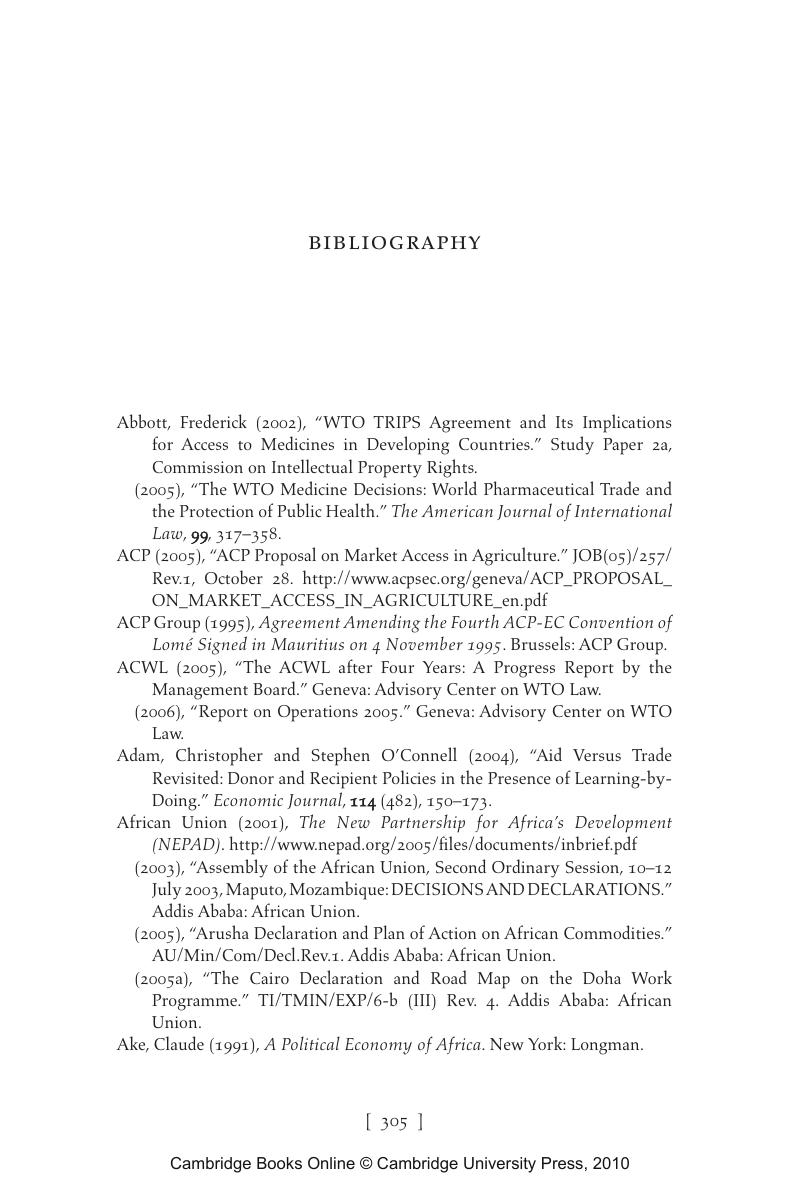Book contents
- Frontmatter
- Contents
- List of Tables and Figures
- Acknowledgments
- List of Abbreviations
- Map of Africa
- 1 INTRODUCTION
- 2 DISPUTE SETTLEMENT UNDERSTANDING
- 3 TRADE-RELATED ASPECTS OF INTELLECTUAL PROPERTY RIGHTS
- 4 AGRICULTURE IN THE DOHA ROUND
- 5 TRANSPARENCY IN GOVERNMENT PROCUREMENT
- 6 AID FOR TRADE
- 7 CONCLUSION
- Bibliography
- Index
- References
Bibliography
Published online by Cambridge University Press: 27 February 2010
- Frontmatter
- Contents
- List of Tables and Figures
- Acknowledgments
- List of Abbreviations
- Map of Africa
- 1 INTRODUCTION
- 2 DISPUTE SETTLEMENT UNDERSTANDING
- 3 TRADE-RELATED ASPECTS OF INTELLECTUAL PROPERTY RIGHTS
- 4 AGRICULTURE IN THE DOHA ROUND
- 5 TRANSPARENCY IN GOVERNMENT PROCUREMENT
- 6 AID FOR TRADE
- 7 CONCLUSION
- Bibliography
- Index
- References
Summary

- Type
- Chapter
- Information
- Africa and the World Trade Organization , pp. 305 - 320Publisher: Cambridge University PressPrint publication year: 2009



